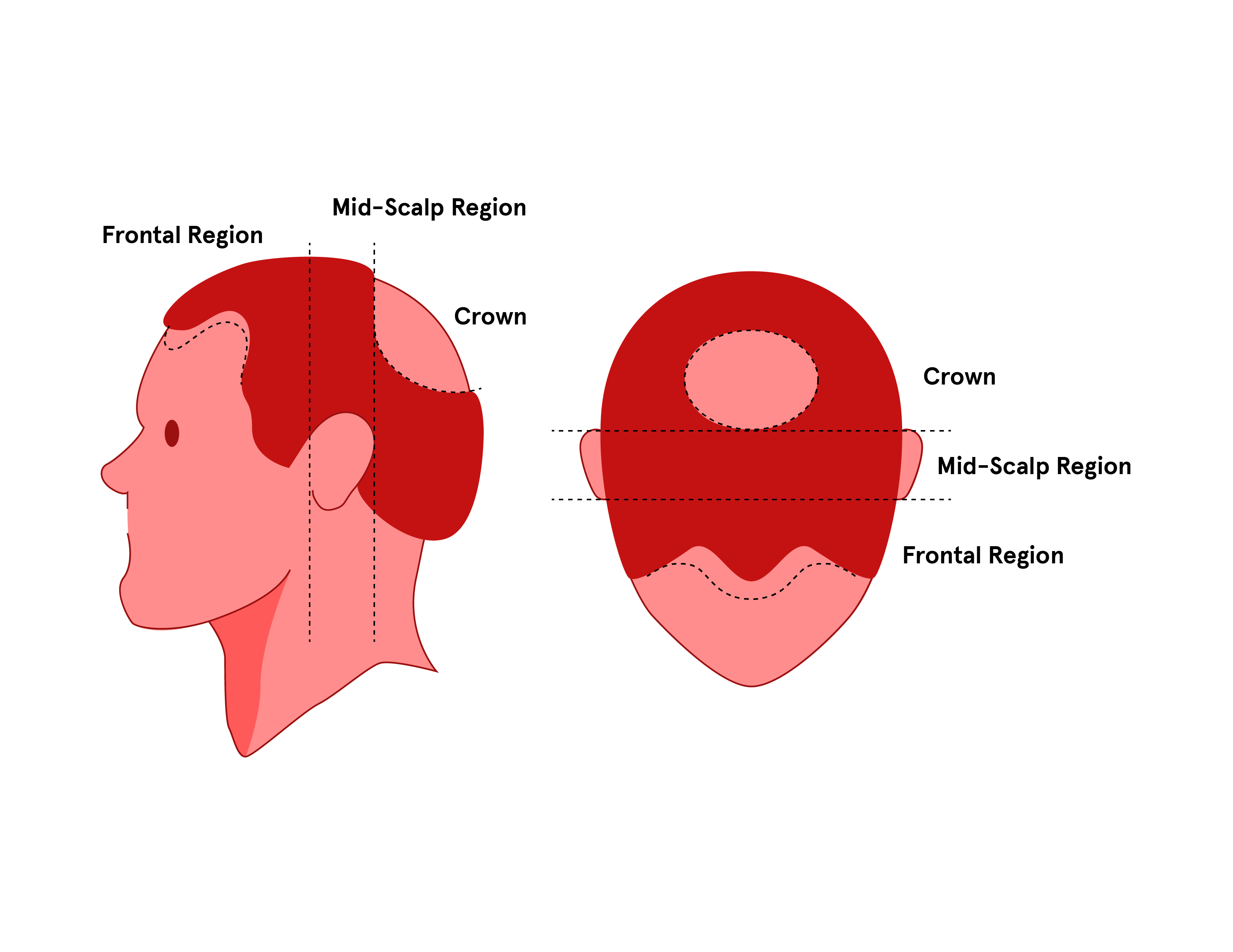All the Different Parts of Your Head, Explained

If you’re reading this article, there’s a good chance you’re experiencing hair loss and trying to figure out what exactly is going on. And the deeper you go on your Google search, the more you’re realizing that you need a whole new vocabulary to talk about everything — “DHT” and “vertex” and “minoxidil” — the list goes on and on. But what would you say if we asked where exactly you’re losing hair?
If you’re nodding along right now, then this article is for you. We’ll tell you the terms hair loss experts use to talk about the different parts of the scalp so you can find the treatment that’s truly right for you.
Ready for a tour of your head?

Frontal region
This is the area people are talking about when they mention a “receding hairline.” The frontal region, also called the “forelock” or “central forelock,” is the section of your hair that’s front and center. It includes the hairline and the hair around your temples.
If you’re losing hair due to male pattern baldness, this is one of the first places where you might notice some changes.
Mid-scalp region
The mid-scalp (also spelled “midscalp”) is, predictably, the middle portion of your scalp. Unless you’re at a late stage of male pattern baldness, you’re likely not experiencing much hair loss here.
Where does the frontal region end and the mid-scalp start? Picture a line that runs across the top of your head and connects your temples. That’s where the border is.
Vertex transition point
This one’s a little tougher to pin down. More of a zone than a point, it’s the area between your mid-scalp and your crown.
How can you tell it apart from the mid-scalp? There’s no hard-and-fast rule, but this section is where your head shape starts to slant upward toward the crown.
Which brings us to the …
Crown
We’re guessing you’re already familiar with this term, but we’ll go ahead and define it for you anyway just to make sure that we’re all on the same page. The crown is the highest point on your scalp, toward the back of your head. It’s also called the vertex. The more you learn about hair loss, the more you’ll see this specific term used.
No matter which parts of your head are affected by hair loss, there are effective treatments you can use to stop it.
Talk to a Keeps doctor today to get the best treatment for your hair loss.
The information provided in this article is not a substitute for professional medical advice, diagnosis, or treatment. You should not rely upon the content provided in this article for specific medical advice. If you have any questions or concerns, please talk to your doctor.
Photo by Frank McKenna on Unsplash